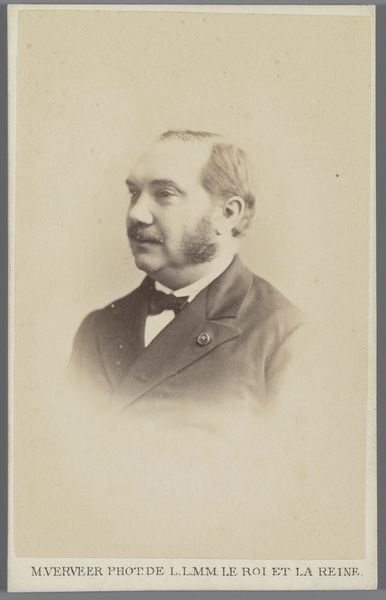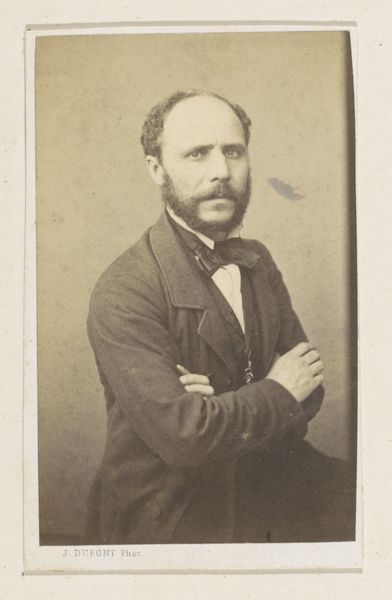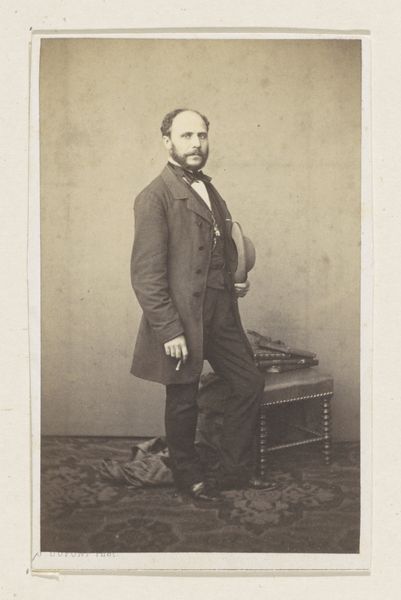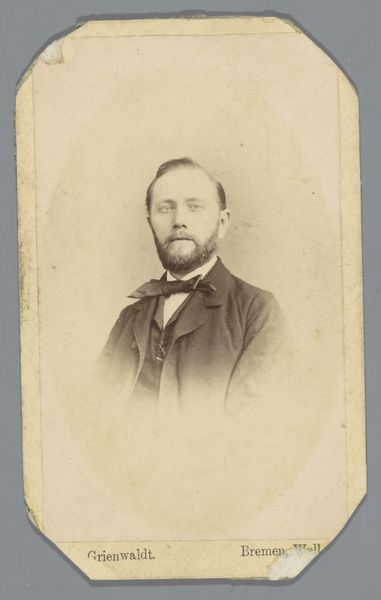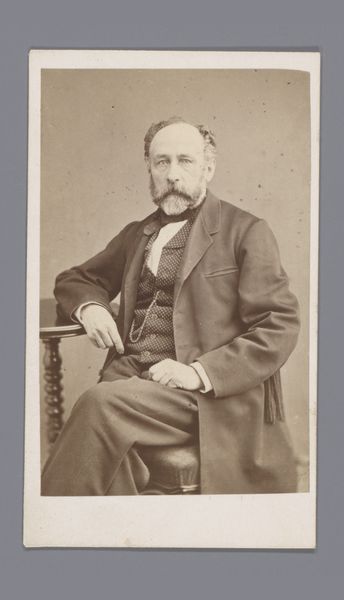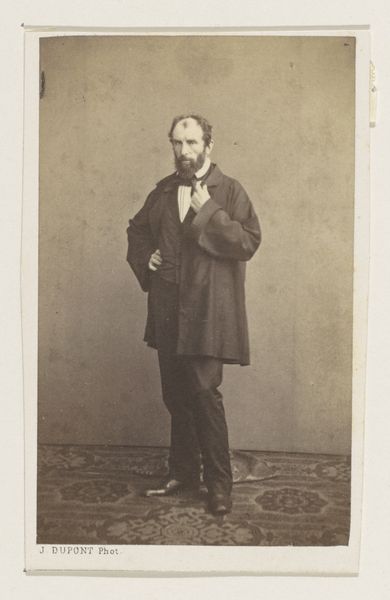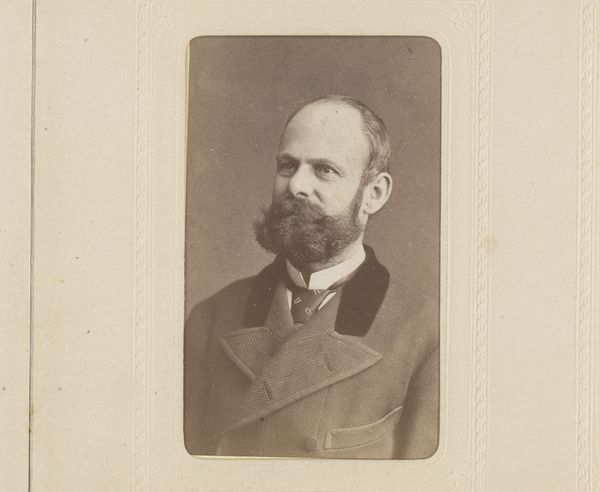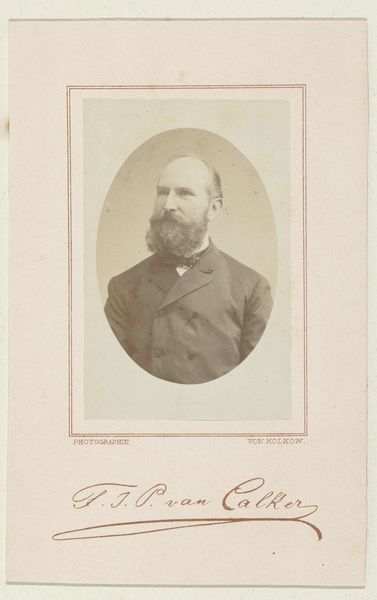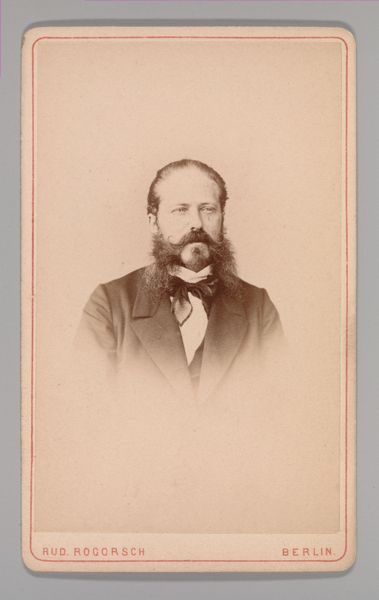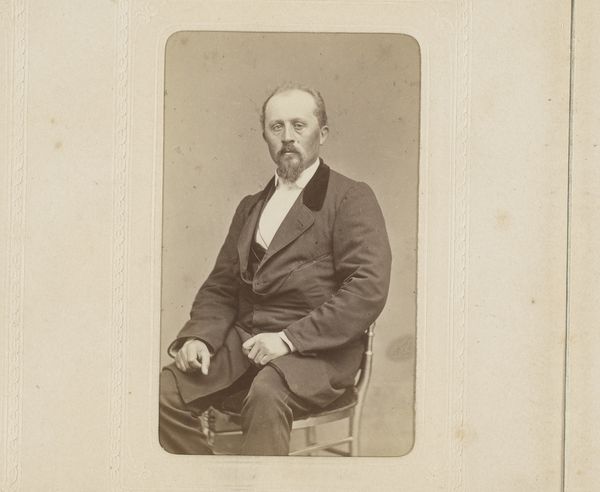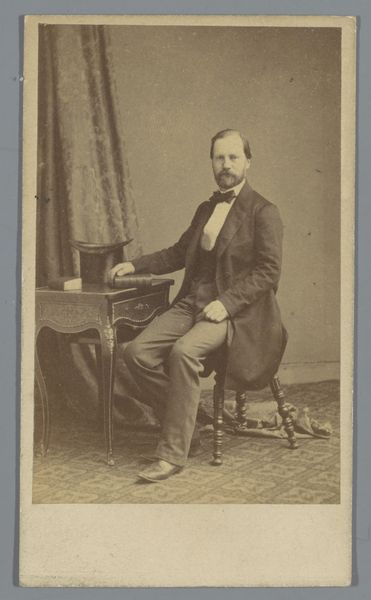
photography
#
portrait
#
16_19th-century
#
photo restoration
#
photography
#
realism
Dimensions: height 87 mm, width 53 mm
Copyright: Rijks Museum: Open Domain
Curator: Let's turn our attention to this photograph, simply titled 'Portret van een man met snor en baard, aangeduid als Trey,' dating from somewhere between 1860 and 1900 and made by the photographer J. Tomáš. Editor: A first impression: It's a study in composure. The subject’s posture is remarkably upright. He gives off a real aura of quiet determination. I can almost imagine it's someone with social influence. Curator: Right, but the photographic processes in that era! Creating this would have involved meticulous preparation of materials, from the glass plates to the chemical baths. Imagine the sitter holding perfectly still for minutes on end under hot lights in a studio to achieve this sharpness! And what impact might that have on the sitter's class identity? Was he part of a wealthy bourgoise who wanted to create something resembling high art using "modern" materials? Editor: The limited tonal range draws you in. The way the light plays across his beard and emphasizes the texture of his jacket, creates depth. I wonder about the formal choices around framing – what impact does that border create for you? Curator: For me, the border makes it appear "finished," but to what degree does that add value to the sitter. And how does our contemporary perspective of restored photographs—almost automatically assuming it has value—intersect with the photographic marketplace that existed between 1860-1900? The means of photographic production are, in a way, made invisible by the seeming timelessness of portraiture. Editor: Interesting... But I tend to focus more on the emotional exchange of art! He almost dares you to look closer, doesn't he? This is an exchange, beyond sitter, photograph and us as viewers now. I guess it reveals something more universal. Curator: It seems to also reveal the artist, even though the subject looks directly out at us with conviction! We could discuss how, the artistic labour has shaped that very "universality" you identify within the constraints of class and commerce! Editor: Perhaps. But that depth—of texture, tone, gaze—speaks volumes on its own formal merits. The photograph certainly offers food for thought beyond its historical manufacturing conditions, doesn't it? Curator: Indeed, and perhaps appreciating its historical process allows us to grasp its enduring relevance more completely!
Comments
No comments
Be the first to comment and join the conversation on the ultimate creative platform.

